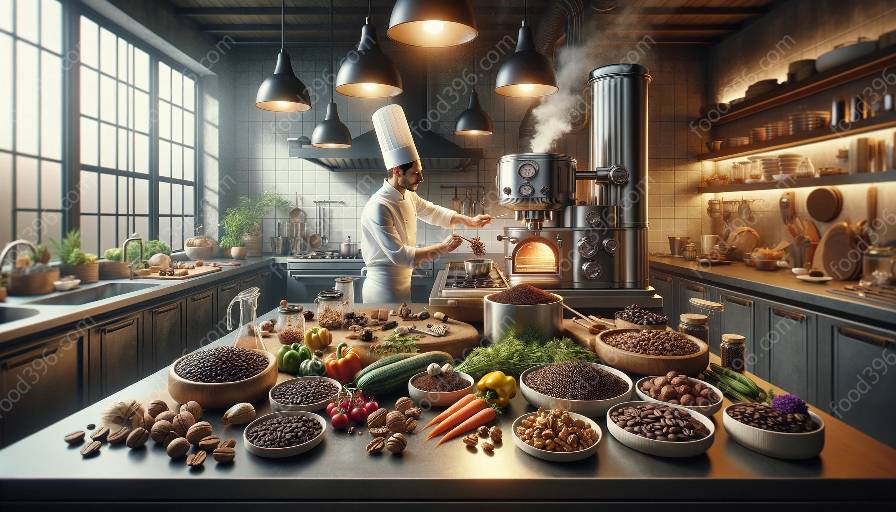Sautéing is a versatile cooking technique that involves cooking food quickly in a small amount of fat over high heat. This method allows for quick cooking while preserving the texture, flavor, and nutritional value of the ingredients. In this comprehensive guide, we will explore the art of sautéing, its compatibility with roasting, and its role in various food preparation techniques.
Understanding Sautéing
Sautéing involves cooking small pieces of food in a pan over high heat, using a small amount of oil or fat. The high heat and quick cooking time allow the food to develop a flavorful outer crust while retaining its natural juices and tenderness.
One of the primary advantages of sautéing is its ability to preserve the nutritional value of the ingredients. The quick cooking process helps to retain vitamins and minerals, making it a healthy cooking method.
Sautéing is a popular cooking technique for a wide variety of ingredients, including vegetables, meats, fish, and even fruits. It is a fundamental skill in many cuisines and is valued for its ability to infuse dishes with deep, rich flavors.
Keys to Successful Sautéing
There are several key elements to successful sautéing:
- High Heat: The pan should be preheated over high heat to ensure quick cooking and the development of a flavorful crust on the ingredients.
- Even Size and Thickness: For even and consistent cooking, ingredients should be cut into uniform sizes and thickness.
- Minimal Fat: Sautéing uses a small amount of fat, just enough to coat the pan and prevent sticking. This keeps the dish light and healthy.
- Continuous Movement: Ingredients should be constantly stirred or flipped in the pan to ensure even cooking and prevent burning.
Sautéing and Roasting
While sautéing and roasting differ in their cooking methods, they are both valuable techniques for enhancing the flavor and texture of various foods. Sautéing provides quick cooking and a distinct outer crust, while roasting imparts a deep, caramelized flavor from longer exposure to dry heat.
These techniques can complement each other in a single dish. For example, sautéing vegetables before roasting them in the oven can enhance their natural flavors and textures. The combination of sautéing and roasting can result in a well-balanced, flavorful dish with a variety of appealing textures and tastes.
Sautéing in Food Preparation Techniques
Sautéing plays a crucial role in various food preparation techniques, including:
- Stir-Frying: A popular cooking method in Asian cuisine, stir-frying involves quick sautéing of ingredients in a wok over high heat. This technique allows for the retention of the natural flavors and textures of the ingredients.
- Sautéing for Meat and Seafood: Sautéing is an essential step in preparing meat and seafood dishes, as it adds depth of flavor and creates a desirable outer crust.
- Building Flavor in Sauces: Sautéing aromatic ingredients, such as onions, garlic, and spices, is a common technique for building flavor in sauces and gravies.
- Partial Cooking: Sautéing can be used as a preliminary step to partially cook certain ingredients before incorporating them into a more complex dish, such as casseroles or stews.
Experimenting with Sautéing
One of the most appealing aspects of sautéing is its versatility. You can experiment with different oils, fats, and seasonings to create unique flavors and textures. Sautéing also encourages creativity in combining various ingredients to create satisfying and flavorful dishes.
As you master the art of sautéing, you'll find that it not only enhances the taste and texture of your dishes but also offers a convenient and time-efficient way to prepare meals. Whether you're sautéing vegetables, meats, or seafood, the flexibility and speed of this cooking method make it a valuable technique in any kitchen.

